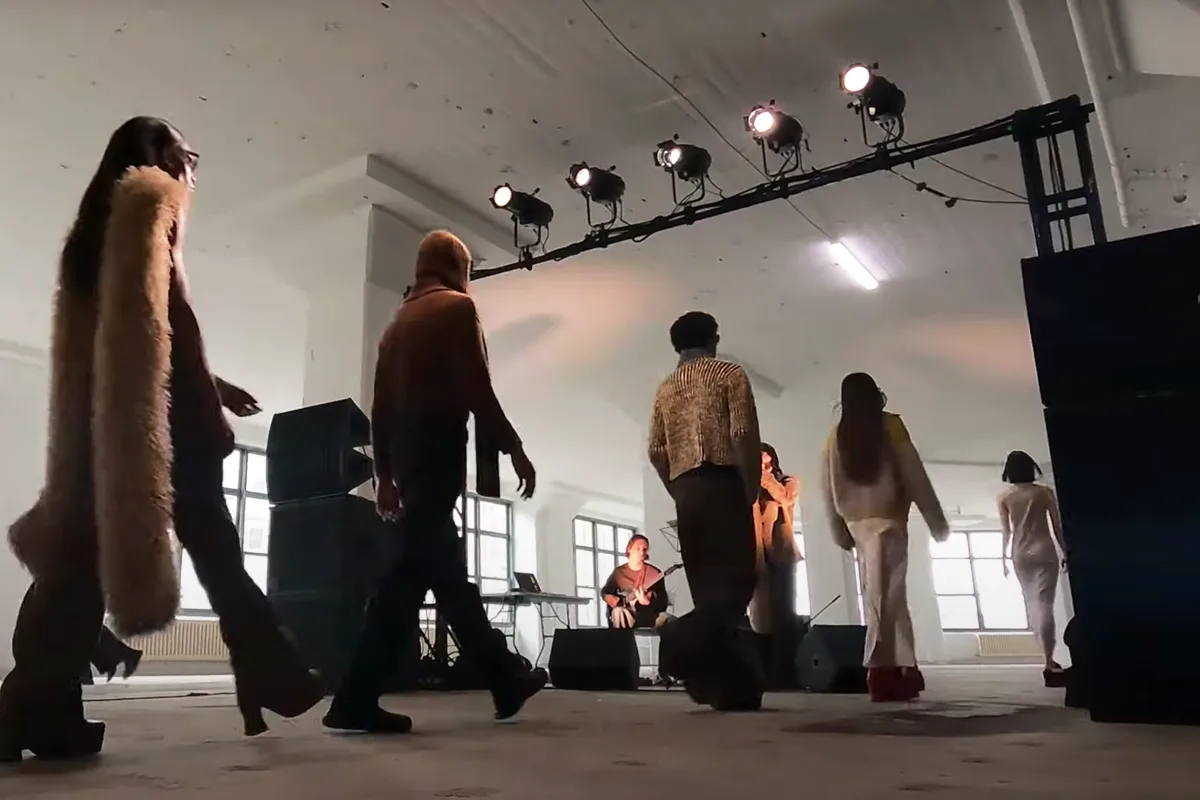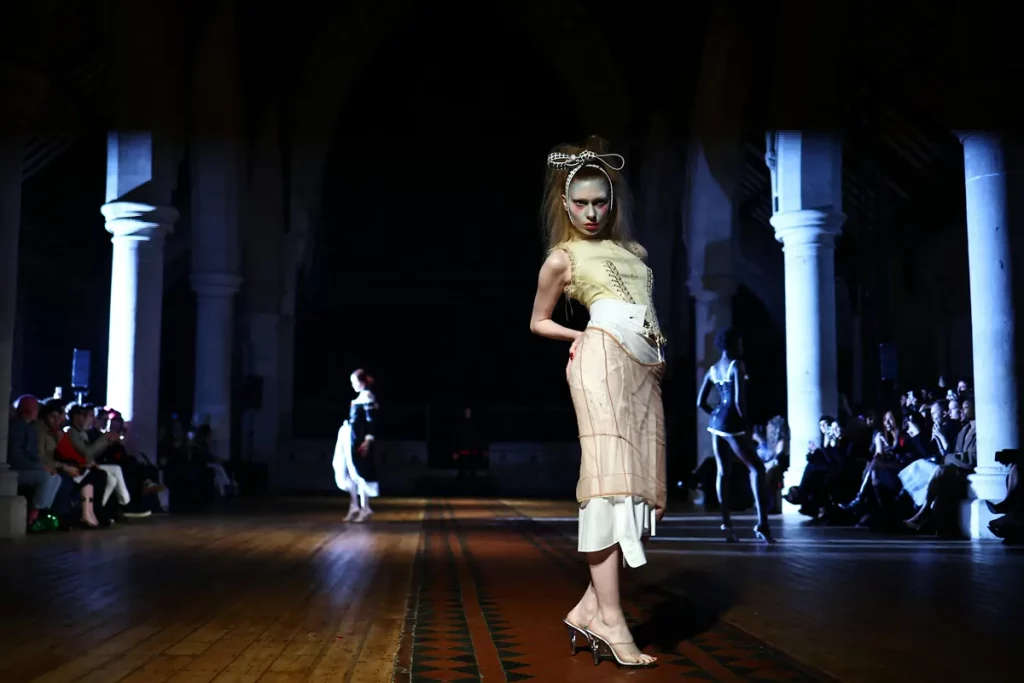Chronicles from NYFW and LFW – why are we still holding on to an old idea to recreate something new? This might be the time to rethink the old tradition of what fashion weeks look like
New York and London Fashion Week now is concluded and we’re awaiting the Milan and Paris counterparts, it means we’ve reached the half time of what is referred to as Fashion Month. The scope of Fashion Month is the biannual circuit of the big four fashion cities during women’s season — New York, London, Milan and Paris. These are the main fashion weeks, which present the most interesting and biggest names within the industry. It has since the end of the twentieth century become a vital part of the fashion industry.
The Metamorphosis Of Fashion Weeks
Fashion week is a phenomenon that has grown from an industry matter to a pop cultural event being covered globally. The concept itself isn’t a protected title and in previous years we’ve seen the rise of fashion weeks with a slew of prefaces — Metaverse, Digital, AR, Sustainability, LGBTQ+, and every city and village there is. The idea of fashion week has developed from being an industry insider event to being a cultural happening for the wider public, adorned with glitz and glamour.
Previously, its main function was to present new collections for the press and buyers. The press mediated the collections and dressed them in contexts that would attract readers. Buyers decided what to fill their stores with for the upcoming season. But, in the mid-naughts, this was starting to change.
Bloggers such as Bryan Yambao (BryanBoy), Susie Lau, Chiara Ferragni and Tavi Gavinson drew to the surface, due to the new personal style blogs. Their colloquial tone of voice, a more approachable sense of style and a tongue-in-cheek approach to an industry which had an air of elitism connected to it picked the general public’s interest more than what was being shown on the runways.
Since then, bloggers — now influencers — have become a vital part of the industry. Street style is inevitable and documents what people are wearing outside of the shows. Which celebrities attend the show, who is wearing whom and so on. Of course, runways are still important for the industry. But, in 2024 what happens outside of the show venues is now equally important as the collections itself. It has become a moment for brands to strengthen their post-modernistic cultural capital at large.
Fashion is changing, so are the cities
Fashion is intrinsically linked to change; new collections are presented ad infinitum and propose newness and change. In the same way as fashion and fashion weeks itself have changed in the previous 20 years, the locations in which these are held aren’t as static as it seems.
When it comes down to it, the bottom line is vital. According to Launchmetrics, a company that measures and monitors the fashion industry through data, two fashion weeks are standing out. By using a proprietary algorithm, called Media Impression Value (MIV), Launchmetrics has measured the impact of the placements and mentions across various channels and voices. In the previous season, New York acquired $264 million in MIV and London $87M in MIV, while Milan and Paris had $329M and $499M, respectively.
The numbers speak for themselves, if a fashion brand wants recognition, Paris and Milan are becoming the prime locations. However, it hasn’t always looked like this and there is a reason why these are the big four. But why is the coverage of the cities so different? And could there be a future in which the four musketeers are becoming two? Or should we rethink the idea of city-centric fashion weeks as a whole?
To understand today we need to know history
One reason could be attributed to the difference in fashion history. Both Italy and France have a longer and more withstanding relationship with fashion and clothing production. In comparison, New York and London are quite young fashion cities.
France in general, but Paris in particular, is intrinsically linked to fashion. From King Louis XIV and his recognition of the domestic textile- and fashion trade to Haussman’s Paris to Charles Frederick Worth and the first Haute Couture collections to the foundation of the Federation de la Haute Couture in 1945.
Italy has a long-standing history of producing luxury goods which draws back to the Renaissance and mercantile times. Today, Italian fashion is primarily connected to Milan, but the crate of the contemporary Italian fashion system is to be found in Florence. It could be traced back to the 1950s when Giovanni Battista Giorgini started organizing fashion shows in his home and later Palazzo Pitti. With press and buyers already in Paris for the shows, it was an easy task to get them to Florence as well.
In the late 60’s, brands, due to some controversy, moved to Milan. In the following years what would become Milan Fashion Week is being formed. Compared to Paris’s more exclusive and elitist fashion, Italian fashion revolutionized ready-to-wear and became more accessible. Designers such as Gianfranco Ferré, Gianni Versace and Giorgio Armani are some of the architects behind the fashion capital Milan.
If I Can Make It There, I Can Make It Anywhere
New York Fashion Week could be attributed to the publisher and the mother of all PR executives, Eleanor Lambert. In the 1940s, Lambert started organizing fashion exhibitions and shows since editors weren’t able to travel to Europe.
Ever since, American designers have been successful in establishing New York as a fashion capital; Halston, Calvin Klein, Ralph Lauren, Tommy Hilfiger. The list could go on of designers that have suited the American dream, often in commercially viable designs.
New York is also the home of contemporary fashion media; Vogue and Harper’s Bazaar. Editors such as Diana Vreeland and Anna Wintour have played their part in promoting American fashion, with the foundation of the Met Gala as the cherry on the top.
During the late naughts, New York became a fashion epicentre. Tom Ford, Marc Jacobs and Michael Kors were at the helm of big European fashion brands, which strengthened New York as a fashion capital.
Popular culture has been vital in replicating the idea of New York as a fashion city. Both in a general sense, but also looking at specific pieces such as Carrie Bradshaw in Sex and the City or the glamorized fashion world in The Devil Wears Prada. Both idealizing an American fashion dream, that only a few years later feels quite dusty.
When Britannia Where the Cool
The last fashion week to join the quadruple was London. In the late 90’s, London was blooming. Much thanks to the political reforms from New Labour and Prime Minister Tony Blair aimed towards the cultural- and creative industries. With the rise of Oasis, Blur, and Spice Girls, a bouncing rave scene, films from the UK were on everyone’s lips, the Young British Artists with Damien Hirst in the lead gained global recognition. British culture was stellar.
The same tendencies were to be found in the fashion industry. Designers such as John Galliano, Alexander McQueen and Stella McCarthy reigned supreme and paved the way for the likes of Christopher Kane, Phoebe Philo, and so on. Magazines such as i-D and Dazed & Confused played a big part in consolidating that image, with a new, raw portraiture of fashion. London Fashion Week was the talk of the town.
The new designers in London injected a young, grungy new spirit into fashion, fueled by a new type of fashion media with the same trailblazing approach.
Even though London and the UK are still holding the flag high when it comes to young talent, the fashion week is far away from its heyday. Martine Rose and Grace Wales Bonner from their eponymous labels are now showing in Paris. Charles Jeffrey of Charles Jeffrey Loverboy showcases his collections in Milan, JW Anderson is presenting his men’s collections in Milan, and one of the previously promising names of LFW, Maximilian Davis, became the Creative Director of Salvatore Ferragamo. London could rather be seen as a plantation school for emerging designers, rather than good soil for lucrative business.
Fashions’s oligopoly is becoming territorial
Fashion is becoming, by the day, controlled by a smaller amount of companies, which at the same time is growing bigger. The last example came in the previous week when L Catterton bought a minority stake in the Tod’s Group. L Catterton is partially owned by Bernard Arnault, the French businessman who owns Louis Vuitton Moet Hennessy (LVMH), which is one of the major fashion- and luxury conglomerates.
Besides LVMH, groups and conglomerations such as Kering, OTB, The Prada Group and Richemont are entrenching their power day by day. There is no coincidence that these are based in either Paris or Milan, and their biggest assets are French and Italian.
Changing Tides; Literally and Figuratively
Both Paris and Italy (I don’t want to refer to Milan, since Milan is rather an economic centre, than an illustrative image for Italy as a whole), have a stereotypical, utopian dream connected to it. Paris with its Parisian Chic, elegance and romance. Italy has its La Dolce Vita, craftsmanship and the rich heritage. In both New York and London, the lustrous image has got scratches on the surface, and long gone are Carrie Bradshaw’s New York, Cool Brittania or the idyllic idea of Notting Hill.
Of course, there are political incentives to this as well. Brexit is playing a part in why designers might look twice about establishing themselves in London. Rising export costs, in a city with extreme rents and inflation in the price of materials aren’t a match made in heaven. New York, has historically been a gateway to the American market, one of the most blooming markets when it comes to fashion. In recent years, we’ve seen new markets and economies pop up, which have a bigger purchase power than the states; China, the Gulf states, and India, to name a few.
In the same way, as previously mentioned cities are often described in conjunction with stereotypical assumptions about the city and country at large, up-and-coming fashion cities are often framed in the same manner — Copenhagen is often celebrated for its cosiness and hygge, Berlin is likely seen as progressive and vibrant. These claims aren’t necessarily true and don’t represent their whole domestic fashion industry.
However, they consolidate and validate our perceptions.
The Abandonment of the Big Four?
The idea of a fashion week has always been connected to a city. It represents the fashion industry, but also the city as a whole. Fashion was a major factor in making London cool and edgy. As we thanks to new technologies are becoming more global than ever, could we see the same need for a fashion week that has a designated city?
A good example here is Scandinavia. In the region, there is currently one fashion week that is worth mentioning; Copenhagen Fashion Week. It boasts brands and designers from the whole region and the whole Nordics is being represented. It has put in sustainability regulations, which follow the trajectory of the industry.
Fashion is today a global phenomenon and should be handled as such. Creativity could today be found everywhere and ideas travel in real time. Style, trends and types of fashion could be shared in New York, New Delhi and Cape Town. The economic centers aren’t what they used to be and money is being spent in upcoming economies.
Even though fashion is an industry, despite being driven by change, it holds its traditions and hierarchies dear. But in a changing world, maybe fashion has to change with it, and is this maybe the time to start to dismantle the idea of the Big Four?




















